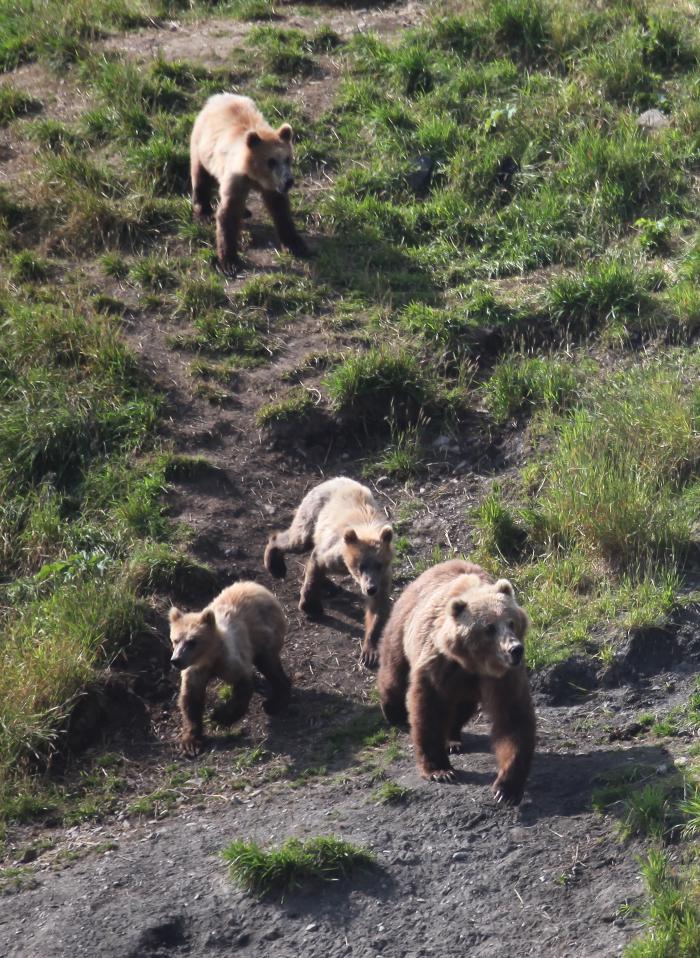Bear Cub — Taquka'angcuk
Taquka'angcum maamani malirqatuu'uraa. – The little bear is following its mama.

Photo: A Kodiak brown bear sow with cubs.
The Kodiak Archipelago is home to an unusually dense population of brown bears (Ursus arctos middendorffi). Biologists believe that there are as many as 3,500 bears in the region, with the highest densities in southwest Kodiak Island. This large number of bears reflects both the islands’ excellent bear habitat the high reproductive rates of female bears.
Kodiak sows begin reproducing at about age five and continue to have cubs about every four years into their twenties. Cubs are born in mid-winter, typically in litters of two or three. Conservatively, this means that one female bear could produce eight to fifteen additional bears! However, not all of these taquka'angcut, little bears, live to adulthood. Biologists estimate that about a quarter of young bears die in the first three years of life, often in encounters with adult male bears. Others get into trouble when they part from their mothers as adolescents. Young bears are more likely to be shot in self-defense than bears of any other age.
Elders report that there are many more bears today than in the past, largely because people used to kill bears when they ventured into communities. Larsen Bay Elder Dora Aga remembered her parents leaving her and her siblings on the beach in Uyak Bay overnight. The children slept in a tent while their parents worked the family beach seine in another location, as there was no fear of bears in the area. Aga also remembered eating bear cubs. For a gathering, people in the Uyak Bay area would harvest two or three cubs and roast them over an open fire. The meat of the young animals was delicious and tasted like pork.
Kodiak sows begin reproducing at about age five and continue to have cubs about every four years into their twenties. Cubs are born in mid-winter, typically in litters of two or three. Conservatively, this means that one female bear could produce eight to fifteen additional bears! However, not all of these taquka'angcut, little bears, live to adulthood. Biologists estimate that about a quarter of young bears die in the first three years of life, often in encounters with adult male bears. Others get into trouble when they part from their mothers as adolescents. Young bears are more likely to be shot in self-defense than bears of any other age.
Elders report that there are many more bears today than in the past, largely because people used to kill bears when they ventured into communities. Larsen Bay Elder Dora Aga remembered her parents leaving her and her siblings on the beach in Uyak Bay overnight. The children slept in a tent while their parents worked the family beach seine in another location, as there was no fear of bears in the area. Aga also remembered eating bear cubs. For a gathering, people in the Uyak Bay area would harvest two or three cubs and roast them over an open fire. The meat of the young animals was delicious and tasted like pork.
